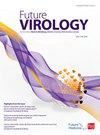Short hairpin RNA-mediated matrix gene silencing of human respiratory syncytial virus as a potent antiviral strategy
IF 1.4
4区 医学
Q3 VIROLOGY
引用次数: 0
Abstract
Aim: Human respiratory syncytial virus (HRSV) is a common cause of respiratory infections, particularly in infants and the elderly. Ribavirin is the only US FDA-approved antiviral drug for HRSV infection, but it has unwanted side effects. Methods: We engineered an shRNA targeting the HRSV- M gene to antagonize HRSV replication. Results: The results showed that shRNA had a similarly significant reduction in viral load (99.8%) as ribavirin. In addition, combined treatment with ribavirin and M-shRNA resulted in a significant reduction in viral load compared with ribavirin or M-shRNA alone. Conclusion: These results suggest that M-shRNA could be a potential new inhibitor of HRSV replication and could offer a safer and more effective treatment option for HRSV infection in the future.短发夹RNA介导的人呼吸道合胞病毒基质基因沉默作为一种有效的抗病毒策略
目的:人呼吸道合胞病毒(HRSV)是呼吸道感染的常见原因,特别是在婴儿和老年人中。利巴韦林是美国fda批准的唯一一种治疗HRSV感染的抗病毒药物,但是它有副作用。方法:我们设计了一种靶向HRSV- M基因的shRNA来对抗HRSV的复制。结果:结果表明shRNA与利巴韦林具有相似的显著的病毒载量降低(99.8%)。此外,与单独使用利巴韦林或M-shRNA相比,利巴韦林和M-shRNA联合治疗可显著降低病毒载量。结论:这些结果提示M-shRNA可能是一种潜在的新的HRSV复制抑制剂,并可能在未来为HRSV感染提供更安全、更有效的治疗选择。
本文章由计算机程序翻译,如有差异,请以英文原文为准。
求助全文
约1分钟内获得全文
求助全文
来源期刊

Future Virology
医学-病毒学
CiteScore
4.00
自引率
3.20%
发文量
84
审稿时长
6-12 weeks
期刊介绍:
Future Virology is a peer-reviewed journal that delivers essential information in concise, at-a-glance article formats. Key advances in the field are reported and analyzed by international experts, providing an authoritative but accessible forum for this ever-expanding area of research. It is an interdisciplinary forum for all scientists working in the field today.
 求助内容:
求助内容: 应助结果提醒方式:
应助结果提醒方式:


